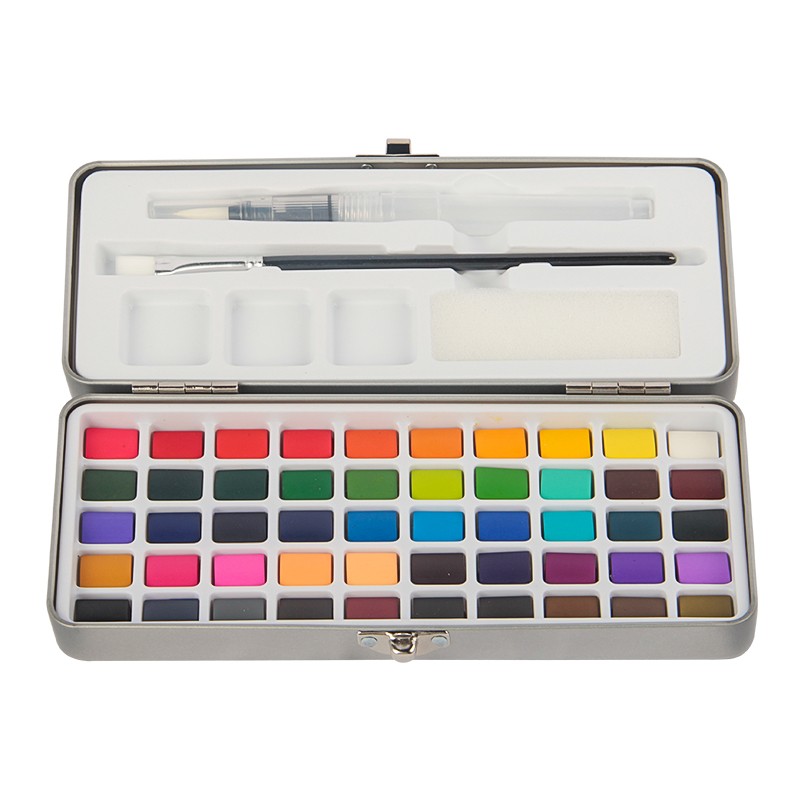- English
- Español
- Português
- русский
- Français
- 日本語
- Deutsch
- tiếng Việt
- Italiano
- Nederlands
- ภาษาไทย
- Polski
- 한국어
- Svenska
- magyar
- Malay
- বাংলা ভাষার
- Dansk
- Suomi
- हिन्दी
- Pilipino
- Türkçe
- Gaeilge
- العربية
- Indonesia
- Norsk
- تمل
- český
- ελληνικά
- український
- Javanese
- فارسی
- தமிழ்
- తెలుగు
- नेपाली
- Burmese
- български
- ລາວ
- Latine
- Қазақша
- Euskal
- Azərbaycan
- Slovenský jazyk
- Македонски
- Lietuvos
- Eesti Keel
- Română
- Slovenski
- मराठी
- Srpski језик
What are the watercolor color mixing techniques that must be mastered by beginners of watercolor?
2024-05-30
1. Dilute the pigment
Any primary color, intermediate color, and multi-color can be diluted by adjusting the amount of water to achieve color depth. If there is too much water, the purity of the pigment will be reduced and the brightness of the pigment will be very high. If there is less water, the pigment purity is high and the brightness is low
2. Additive and subtractive color mixing
The additive mixing method uses the three basic colors of red, green, and blue to mix into different secondary colors, such as: red and green become yellow, green and blue become cyan, and red and blue become magenta.
The subtractive color mixing method is to mix white with the primary color. The watercolor color mixing technique absorbs the primary color and changes it into different colors, such as: white minus red becomes cyan, white minus green becomes magenta, and self-minus blue becomes yellow.
3. Wet bonding of pigments Watercolor color mixing techniques Wet bonding is to cover a color before it is completely dry. When two colors meet, a mutual penetration effect will be formed. The two colors will remain in their original colors, but the picture effect is really amazing. When wet bonding, the water content of the two primary colors should be kept consistent, otherwise the color will be biased.





